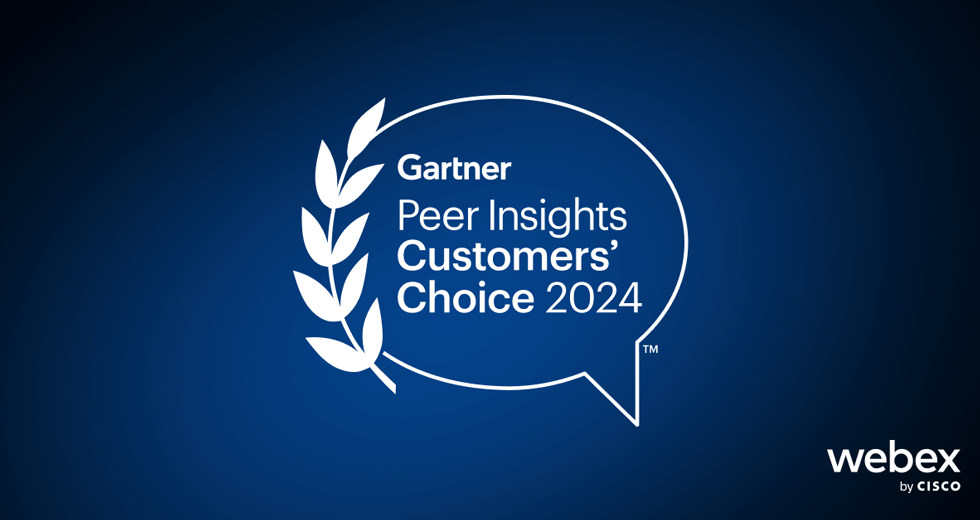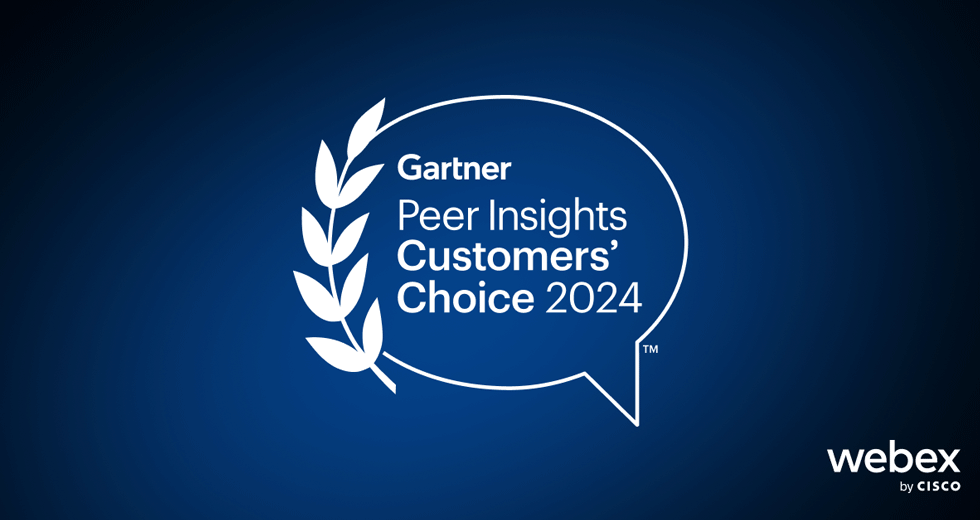P2P and Customer Choice A New Era
P2P and the return of customer choice sets the stage for a fascinating exploration of how peer-to-peer marketplaces are revolutionizing consumerism. This dynamic shift empowers individuals, giving them unprecedented control over their transactions and experiences. We’ll delve into the customer journey, examining the technology driving these platforms, and analyzing the evolving role of trust and choice within the P2P ecosystem.
From the initial discovery process to final transaction completion, we’ll explore the intricate customer journey on P2P platforms. We’ll compare this to traditional retail models, highlighting the key differences and the unique ways P2P platforms empower consumers. This discussion will also include case studies of successful P2P marketplaces, examining their strategies for empowering customer choice and addressing potential challenges.
P2P Marketplaces and the Customer Journey
Peer-to-peer (P2P) marketplaces are transforming how we buy and sell goods and services. They offer a unique customer experience, often characterized by direct interaction between buyers and sellers, bypassing traditional intermediaries. This shift empowers consumers with greater control and choice, while also presenting new challenges related to trust and security. This exploration dives into the nuances of the customer journey on P2P platforms, comparing it to traditional retail models.The customer journey on a P2P marketplace typically involves several key touchpoints, from initial discovery to final transaction completion.
Understanding these stages is crucial for both platform developers and users to optimize the experience and build trust.
Typical Customer Journey on a P2P Marketplace
The customer journey begins with discovery. Users often leverage search functionalities or curated recommendations on the platform to find desired products or services. Once a suitable listing is identified, detailed information, reviews, and seller profiles become critical for evaluation. This is followed by direct communication with the seller, which may include negotiating pricing, arranging delivery, or addressing any concerns.
Ultimately, the transaction is finalized, with the platform playing a role in facilitating secure payment processing and potentially dispute resolution.
Different Ways Customers Interact with the Platform
Customers interact with P2P platforms through various methods, reflecting the diverse nature of the marketplaces. These interactions can involve searching for specific items, browsing categories, using filtering tools to refine choices, and engaging in direct communication with sellers via the platform’s messaging system. The platform’s design influences how seamlessly these interactions flow. Payment systems, security protocols, and dispute resolution mechanisms are key elements that affect the user experience.
Furthermore, customer support channels, reviews, and ratings help customers assess the trustworthiness of both the platform and individual sellers.
Comparison with Traditional Retail Models
The customer experience on P2P platforms differs significantly from traditional retail models. In traditional retail, the customer typically interacts with a single entity, the retailer, with limited direct interaction with other customers. P2P marketplaces, in contrast, place the customer directly in contact with other consumers, potentially leading to greater transparency and flexibility. This direct interaction, however, also introduces new variables in terms of trust and risk management.
Role of Trust and Security in Shaping the Customer Journey
Trust is paramount on P2P platforms. Mechanisms like seller ratings, buyer reviews, and transparent transaction histories are vital in building trust. Robust security measures, including secure payment gateways and fraud detection systems, are essential for safeguarding transactions and protecting users. The perceived level of trust directly influences the customer’s willingness to engage with the platform and transact with individual sellers.
Peer-to-peer (P2P) networks are bringing back a sense of customer choice that was lost in the monolithic software empires of the past. Analysts are now examining the Sun-Microsoft alliance, as seen in the article “sun microsoft alliance analysts look beyond rhetoric” here , to see if the rhetoric translates into real-world benefits for the end user. Ultimately, this shift towards decentralized platforms like P2P is a crucial step in reclaiming power from corporations and returning it to the consumer.
Evolution of P2P Marketplaces
The P2P marketplace landscape has evolved considerably over time, with features and functionalities improving steadily. Early platforms often focused primarily on connecting buyers and sellers. Over time, the focus has shifted towards enhanced security, improved payment processing, and a more streamlined user experience.
| Year | Feature | Description |
|---|---|---|
| Early 2000s | Basic Listing & Search | Platforms emerged, allowing users to list and search for items. Security was rudimentary, and payment methods were limited. |
| Mid 2000s | Enhanced User Profiles & Ratings | Platforms introduced user profiles and ratings systems, building trust through feedback mechanisms. |
| 2010s | Advanced Payment Gateways & Security | Improved payment security and integration with secure payment gateways became standard. |
| Present | AI-powered Recommendations & Dynamic Pricing | AI-powered tools enhance the customer journey with personalized recommendations and dynamic pricing strategies. |
Customer Choice and Empowerment in P2P

Peer-to-peer (P2P) marketplaces are fundamentally reshaping how consumers interact with goods and services. A core aspect of this transformation is the empowerment of customers, allowing them greater agency and choice in their transactions. This shift from traditional, often centralized, models to decentralized platforms provides opportunities for enhanced customer experiences and broader market access.P2P platforms offer a dynamic marketplace where customers are not simply passive recipients of offers.
Instead, they actively participate in the process, negotiating terms, and ultimately choosing from a wider array of options and providers. This direct interaction fosters a sense of control and ownership that traditional retail models often lack. Customers are no longer confined to the offerings of a single entity but can engage with a diverse range of individuals and businesses.
Key Ways P2P Platforms Empower Customers
P2P platforms empower customers through a variety of mechanisms. These include detailed product listings, often featuring user-generated reviews and testimonials. The transparency fostered by these mechanisms allows customers to make informed decisions, compare offerings, and select the best fit for their needs. Furthermore, platforms facilitate direct communication between buyers and sellers, eliminating intermediaries and allowing for more personalized negotiations.
P2P Platform Control Over Transactions
P2P platforms enhance customer control by enabling them to manage their transactions more actively. Features such as secure payment gateways and escrow services protect both buyers and sellers, fostering trust and confidence in the platform. This built-in security minimizes the risk associated with direct transactions, particularly for those unfamiliar with the model. Furthermore, many platforms offer flexible payment options, enabling customers to choose the method best suited to their needs.
Pricing Models and Customer Choice
Different pricing models on P2P platforms affect customer choice significantly. Fixed-price listings allow for a clear understanding of the cost upfront, while auction-based models introduce the element of competition and potential savings. The presence of various listing types—including those with negotiable prices—enables a greater degree of customization and potentially more favorable outcomes for customers. The diverse pricing models available on P2P platforms cater to different customer preferences and transaction goals.
Examples of P2P Marketplaces Changing Customer Access
P2P marketplaces are reshaping access to goods and services in various ways. For example, platforms dedicated to secondhand goods provide access to a vast inventory of items, offering customers a sustainable and cost-effective alternative to purchasing new products. Similarly, platforms connecting freelancers with clients provide access to a global pool of talent, allowing customers to source specialized services at competitive rates.
These examples highlight the potential for P2P marketplaces to disrupt traditional supply chains and create new opportunities for customers.
Factors Influencing Customer Choice in P2P Transactions
| Factor | Description | Impact on Choice |
|---|---|---|
| Product/Service Quality | Perceived quality, reviews, and specifications of the item/service. | Higher quality items tend to be preferred, impacting choice based on perceived value. |
| Price | Cost of the product/service. | Competitive pricing is a major factor in attracting customers. |
| Seller Reputation | History and feedback from past transactions. | Positive seller reputations increase trust and confidence in the transaction. |
| Transaction Security | Platform’s safety measures, escrow services, and payment options. | Secure transactions are crucial for fostering customer confidence and influencing choice. |
| Delivery/Service Speed | Timeliness of product delivery or service completion. | Faster delivery times generally lead to higher customer satisfaction and greater likelihood of choosing that option. |
The Impact of Technology on P2P and Customer Choice
Peer-to-peer (P2P) marketplaces have exploded in popularity, driven largely by the innovative and ever-evolving landscape of technology. This technological revolution has not only fueled the growth of these platforms but also profoundly shaped the customer experience, granting unprecedented levels of choice and control. The seamless integration of technology into every facet of the P2P ecosystem has empowered customers in ways previously unimaginable.
Technology’s Role in P2P Marketplace Growth
Technology has been instrumental in creating and maintaining the robust infrastructure required for P2P marketplaces. From robust search algorithms to secure payment gateways, technological advancements have lowered barriers to entry for both buyers and sellers. This accessibility has fueled a rapid increase in listings and participation, leading to a wider variety of goods and services offered on these platforms.
Advanced matching algorithms, for example, can quickly connect buyers and sellers with similar needs and preferences, streamlining the entire process and significantly increasing the efficiency of these marketplaces.
Mobile Technology and Enhanced Customer Accessibility
Mobile technology has revolutionized the way customers interact with P2P platforms. The ubiquity of smartphones and readily available mobile apps has made accessing these marketplaces easier than ever before. Users can browse listings, make purchases, and manage their accounts anytime, anywhere. This accessibility has significantly expanded the reach of P2P marketplaces, attracting a wider demographic of users and fostering greater engagement.
P2P networks are bringing back a sense of customer choice, allowing users to connect directly and bypass the traditional gatekeepers. This trend is particularly interesting in light of recent news about Symantec acquiring Brightmail’s anti-spam technology, symantec buys brightmail for anti spam tech. This acquisition highlights the evolving need for robust security measures within these peer-to-peer systems, ensuring a reliable and safe user experience.
Ultimately, the future of P2P communication likely depends on finding a balance between this customer empowerment and essential security, to ensure that the return of customer choice isn’t undermined by malicious actors.
The convenience and speed of mobile transactions have become critical factors in driving customer satisfaction and loyalty.
Digital Payment Systems and Streamlined Transactions
Digital payment systems have been a crucial catalyst for the success of P2P marketplaces. The integration of secure and reliable payment options, such as mobile wallets and digital currencies, has significantly streamlined the transaction process. This streamlined process, coupled with the enhanced security of digital payments, has boosted customer confidence and reduced concerns associated with traditional methods. Customers can now complete transactions quickly and securely, fostering a higher degree of trust and engagement with the platform.
Emerging Technologies and the Customer Experience
Emerging technologies, such as blockchain and artificial intelligence (AI), are poised to reshape the customer experience on P2P platforms. Blockchain technology can facilitate secure and transparent transactions, reducing fraud risks and enhancing trust between buyers and sellers. AI-powered tools can personalize the customer journey, providing tailored recommendations and improving the overall shopping experience. For example, AI algorithms can analyze user data to predict needs and preferences, recommending products and services that align with individual tastes, leading to a more satisfying and efficient experience.
Evolution of Payment Methods on P2P Platforms, P2p and the return of customer choice
| Method | Description | Impact on Customer Choice |
|---|---|---|
| Cash | Traditional payment method, often in person. | Limited to local transactions and often requires physical exchange, reducing convenience. |
| Credit/Debit Cards | Widely accepted payment method with online processing capabilities. | Offers broader accessibility and convenience for online transactions, increasing customer trust and confidence. |
| Mobile Wallets | Digital wallets accessible via mobile devices, facilitating contactless transactions. | Increases speed and convenience, reduces fraud risks by removing physical cards. |
| Digital Currencies | Cryptocurrencies like Bitcoin, enabling peer-to-peer transactions without intermediaries. | Offers potential for lower transaction fees and greater security, but still requires understanding and trust of the technology. |
P2P and the Return of Customer Choice
Peer-to-peer (P2P) marketplaces are experiencing a resurgence, driven by a renewed focus on customer empowerment and choice. Consumers are increasingly seeking more control over their purchasing experiences, demanding transparency, personalization, and a wider range of options. P2P platforms are adapting to this shift, recognizing that fostering customer choice is crucial for long-term success.This evolution in P2P marketplaces is not just about offering a broader selection; it’s about empowering consumers to actively participate in the marketplace, shaping their own experiences, and building stronger connections with other users.
This shift necessitates a careful balance between supporting customer autonomy and maintaining platform governance, ensuring a fair and trustworthy environment for all participants.
A Successful P2P Marketplace: Airbnb
Airbnb exemplifies a successful P2P model that has prioritized customer choice. The platform’s strength lies in its diverse range of listings, from budget-friendly apartments to luxury villas, catering to a broad spectrum of traveler preferences.Airbnb has fostered customer choice through a comprehensive review system, enabling users to make informed decisions based on previous guest experiences. The platform also actively promotes user-generated content, showcasing the unique characteristics of each listing and highlighting the experiences offered by hosts.Challenges arise in balancing customer choice with platform governance.
Ensuring the safety and reliability of listings is paramount. Airbnb addresses this through stringent verification processes for hosts and rigorous guest review policies. The platform actively monitors and responds to complaints, striving to maintain a fair and trustworthy environment.
Peer-to-peer (P2P) file sharing is experiencing a fascinating resurgence, offering users more control over their digital content. This renewed focus on customer choice is definitely a positive development, and the recent Dutch court ruling in the Lindows vs. Microsoft case is a powerful example of this. This court decision highlights the potential for challenging dominant tech players and underscores the need for a more decentralized digital landscape, which could ultimately benefit the P2P movement.
Ultimately, the fight for customer choice in the digital world is far from over, but this is definitely a promising sign for P2P’s future.
Addressing Customer Concerns and Feedback
Airbnb actively monitors and responds to guest and host feedback. For instance, concerns about cleanliness or communication issues are promptly addressed through platform interventions. Airbnb also uses feedback to refine its platform and improve user experience. Continuous improvement is a key factor in building trust and maintaining customer loyalty.
Comparison of P2P Models Across Sectors
| Sector | Platform | Strength | Weakness |
|---|---|---|---|
| Accommodation | Airbnb | Vast selection, user-generated reviews, strong community engagement | Potential for inconsistent quality control, safety concerns (especially with short-term rentals) |
| Transportation | BlaBlaCar | Cost-effective transportation options, peer-to-peer connection | Limited range of options compared to traditional transportation, safety and reliability issues in some cases |
| Goods and Services | TaskRabbit | Access to diverse skills and services, flexible booking options | Potential for skill discrepancies, pricing volatility, difficulty in verifying service quality |
| Fashion | ThredUp | Sustainable fashion options, accessible secondhand market | Limited selection compared to traditional retailers, quality control and authenticity concerns |
Future Trends and Opportunities in P2P and Customer Choice: P2p And The Return Of Customer Choice

The rise of peer-to-peer (P2P) marketplaces has fundamentally reshaped how consumers interact with products and services. This evolution has empowered customers with unprecedented choice and control, driving innovation and competition within traditional industries. The future of P2P marketplaces promises even greater opportunities, fueled by technological advancements and evolving consumer expectations.The future of P2P platforms will be significantly influenced by the integration of cutting-edge technologies.
This integration will not only enhance customer experiences but also create entirely new avenues for interaction and transaction. The ability to personalize experiences and leverage data analytics will become increasingly crucial for P2P platforms to thrive in this dynamic environment.
Predictions for the Future of P2P Marketplaces
P2P marketplaces are poised to become more sophisticated and personalized. Anticipating customer needs and preferences will be crucial for platforms to retain users and attract new ones. This involves leveraging data analytics to provide tailored recommendations, personalized search results, and dynamic pricing strategies. Further, seamless integration with existing financial systems will foster trust and streamline transactions.
Potential for New Technologies to Enhance Customer Empowerment
Emerging technologies like AI-powered chatbots, augmented reality (AR), and virtual reality (VR) can significantly enhance customer empowerment on P2P platforms. AI chatbots can provide instant support, answer queries, and facilitate transactions, improving customer service and efficiency. AR and VR technologies can allow potential buyers to virtually experience products, improving the purchasing process and reducing uncertainty.
Emerging Trends in P2P Marketplaces Shaping Consumerism
Several trends are shaping the future of consumerism through P2P marketplaces. The growing popularity of subscription-based services, facilitated by P2P platforms, demonstrates a shift in consumer preferences toward flexible and on-demand solutions. The emphasis on sustainability and ethical sourcing is also influencing consumer choices, with P2P marketplaces providing platforms for businesses and individuals to promote and sell eco-friendly and socially responsible products.
Potential Challenges and Opportunities for P2P Platforms
P2P marketplaces face challenges like ensuring secure transactions, maintaining trust, and mitigating fraud. However, these challenges also represent opportunities for innovation. Robust security protocols, transparent dispute resolution mechanisms, and clear guidelines can help foster trust and build a positive reputation.
Emerging Technologies with Potential Applications in P2P Marketplaces
| Technology | Description | Potential Application |
|---|---|---|
| Artificial Intelligence (AI) | AI algorithms can analyze vast amounts of data to personalize recommendations, predict demand, and automate tasks. | Personalized product recommendations, dynamic pricing, fraud detection, and automated customer service. |
| Blockchain | A decentralized, secure, and transparent ledger technology. | Enhanced security of transactions, reduced transaction fees, and increased transparency. |
| Augmented Reality (AR) | AR overlays digital information onto the real world. | Virtual product demonstrations, allowing customers to visualize products in their own spaces, improving the shopping experience. |
| Virtual Reality (VR) | VR creates immersive digital environments. | Virtual showrooms, enabling customers to experience products in a simulated environment, reducing uncertainty and improving customer experience. |
Final Conclusion
In conclusion, P2P marketplaces are fundamentally altering the way we interact with goods and services. The return of customer choice is a significant outcome of this shift, providing consumers with unprecedented control over their transactions. This evolution is driven by technological advancements, and the future of P2P holds immense potential for further empowering consumers. We’ve seen how platforms are evolving, but the path forward is paved with both opportunities and challenges.
The future of P2P is brimming with exciting possibilities, shaping a new era of consumerism.






